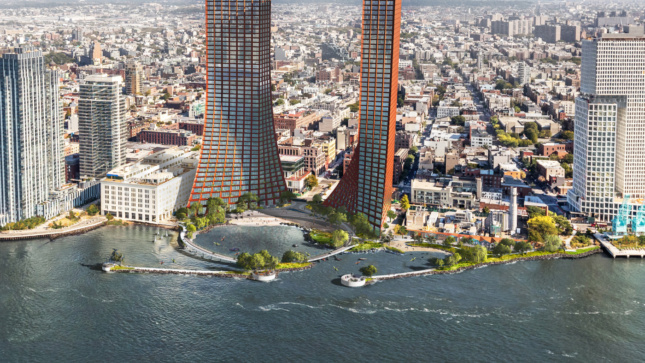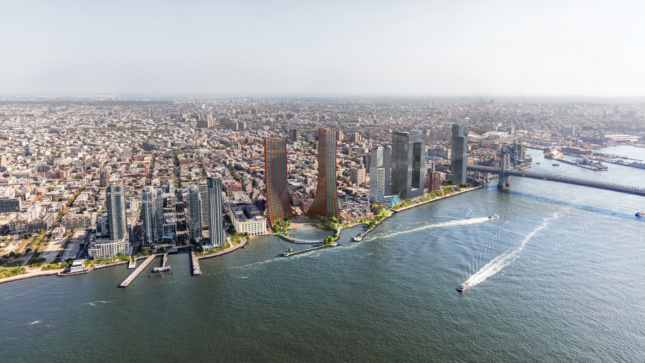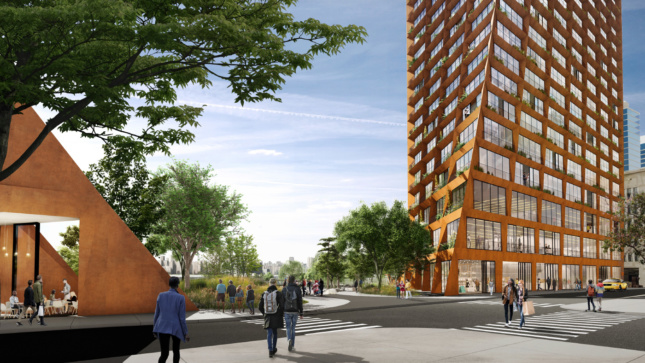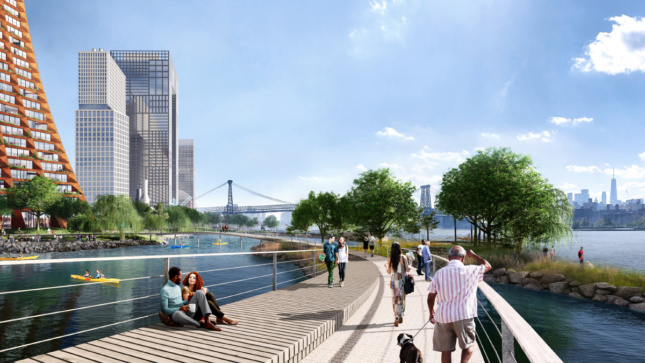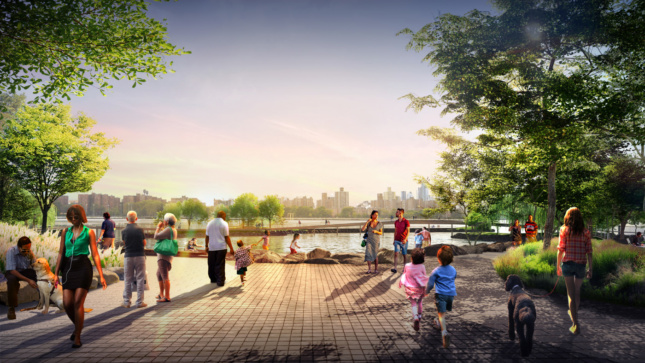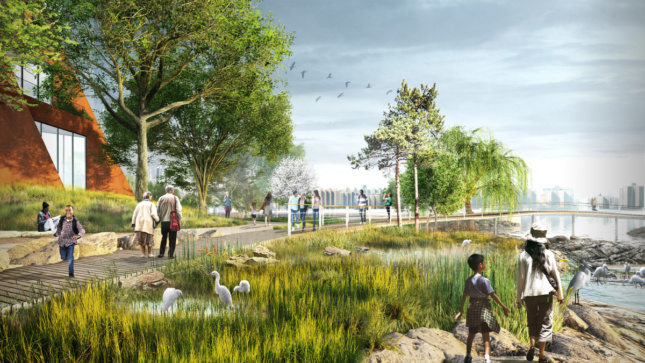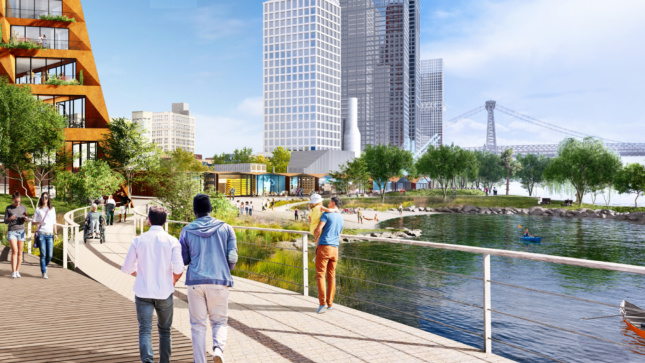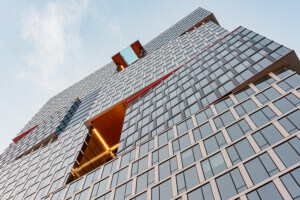Continuing the work done slightly south at Domino Park, today developer Two Trees revealed their newest addition to the Williamsburg, Brooklyn, waterfront. River Street will bring a pair of sloping towers designed by the Bjarke Ingels Group (BIG) and a circular esplanade, cove, beach, boat launch and more, courtesy of James Corner Field Operations (JCFO) to the East River end of Metropolitan Avenue.
Two Trees described the project as not replicating the same park-on-a-pier typology as Domino Park but instead will slope to meet the water. Thanks to the existing concrete caissons already adjacent to the site at 87 and 105 River Street, BIG and JCFO have been able to propose building into the East River to create a total of six acres of public space.
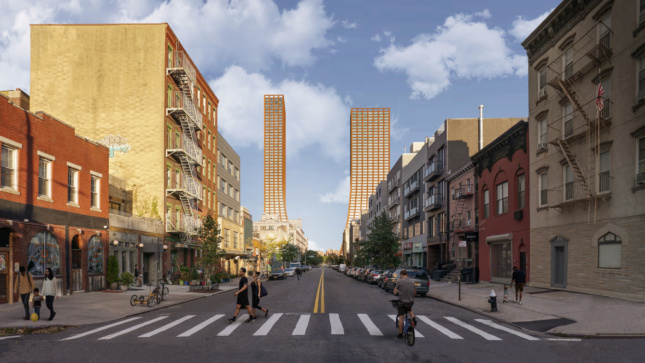
The BIG-designed towers, from the renderings, will loom over the surrounding neighborhood and dwarf the towers at the Domino Sugar Factory complex next door. Totaling 1.2 million square feet across both buildings, the towers will contain 750 market-rate apartment units, 250 affordable units, 47,000 square feet carved out for a new YMCA (with pool), 30,000 square feet for local retail, and 57,000 square feet of office space. An additional 5,000 square feet will be set aside at ground level for a series of community kiosks, which will likely contain amenities for parkgoers and kayakers.
Although the towers will be tall—one will top out at 600 feet, and the other at 650 feet—BIG has attempted to soften their impact by “pinching,” pulling, and spreading out the massing at the base. The towers’ stature will have the added effect of framing the Manhattan skyline for those looking down Metropolitan, and Bjarke Ingels claimed that their triangular footprint was designed as a “funnel” for those looking to reach the shore.
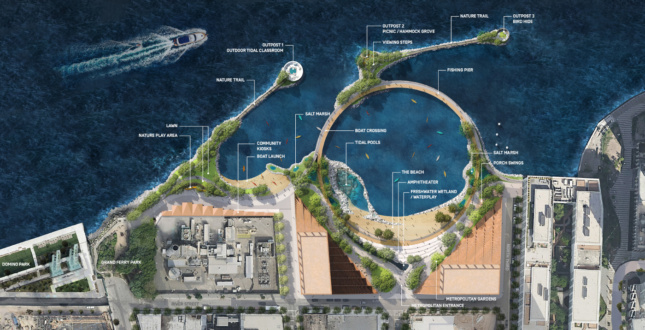
River Street’s most striking feature, at least when viewed from above, will be the circular esplanade and on-river landscaping mentioned earlier. Instead of lifting the shoreline bulkhead to protect from storm surges as is typical for a coastal development, JCFO wants to implement a series of berms and soft edges to both protect River Street from flooding and increase access to the river. That will include a new public beach (JCFO senior principle Lisa Switkin noted that New York’s waterways are the cleanest they’ve been in a century), nature trails, plenty of tidal basins, both saltwater and freshwater marshlands, an amphitheater, outdoor classroom, and more.
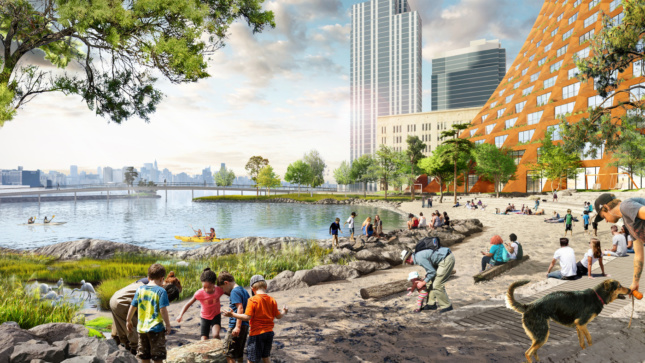
As is fitting for the designers selected by Two Trees, the team claims that River Street borrows from the Netherlands model of “embracing the river” rather than trying to block it out. Accordingly, Ingels claimed that the River Street towers would be able to weather a 500-year-storm surge, thanks to the way the landscape would be able to break up the energy of incoming waves and the placement of the towers’ mechanicals on higher levels.
When asked about a timeline, Two Trees was confident that they would be able to have River Street approved in the next two years under the current City Council administration, although the project will still need to undergo the mandatory seven-month Uniform Land Use Review Process (ULURP). After the ULURP concludes, it should take another five years for River Street to be fully built out. The park and a single tower will be built in the first phase, and the second tower would come afterward.
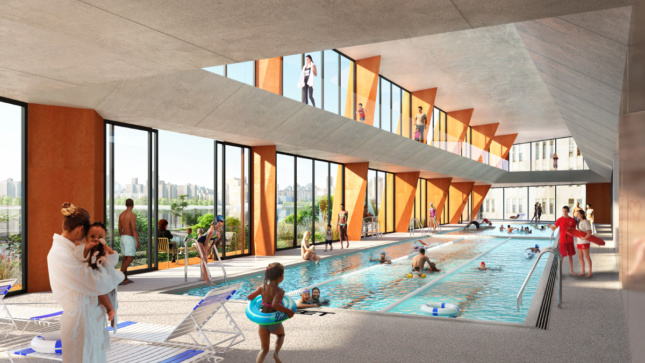
However, according to Switkin, because the project will build on to the East River, they will also need a joint permit from the New York State Department of Environmental Conservation and the U.S. Army Corps of Engineers. Though, Switkin also noted, with the passage of the Living Shorelines Act (H.R.3115) in the House of Representatives earlier this week, federal momentum is building to enable exactly these types of projects.
River Street will be entirely privately funded and maintained by Two Trees, similar to Domino Sugar Factory.






